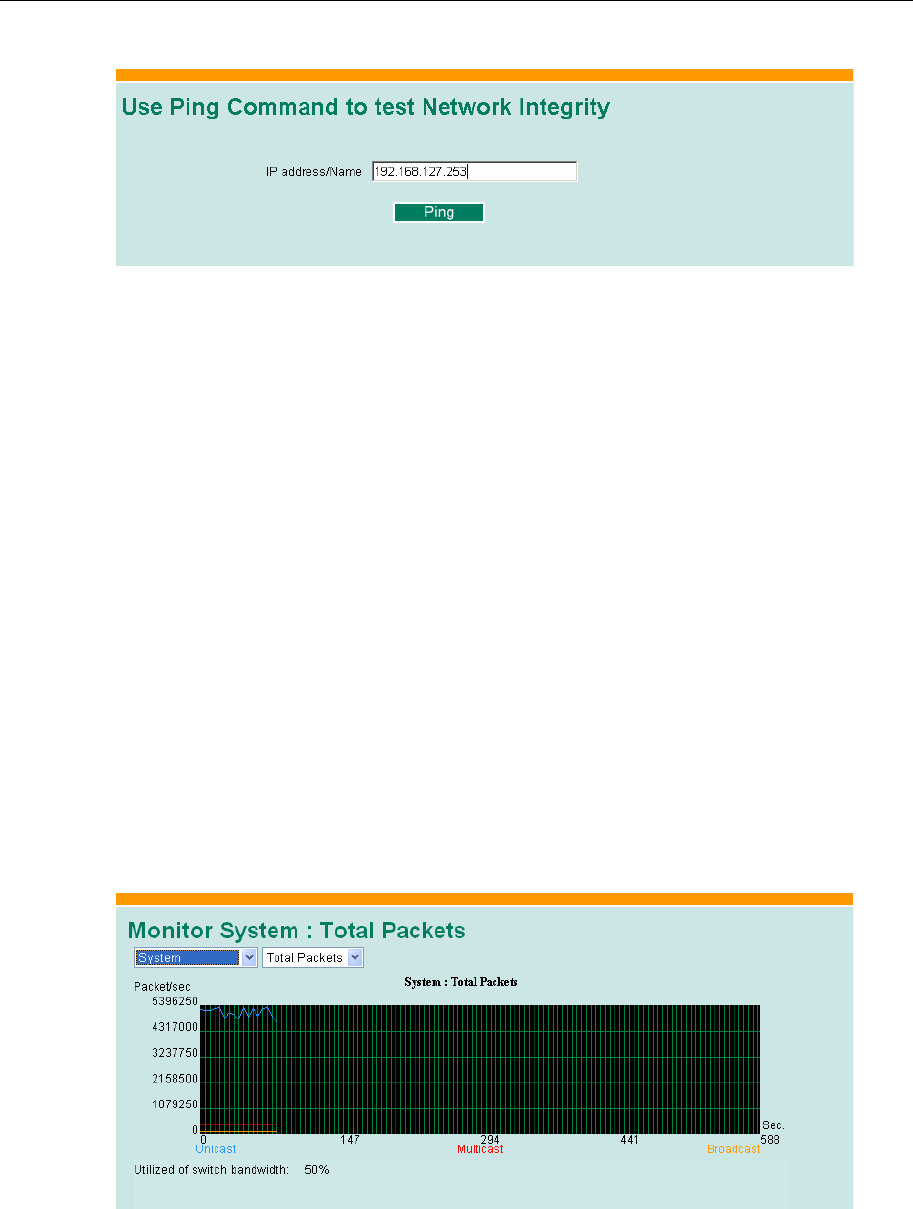
EDS-726 Series User’s Manual Featured Functions
3-64
Ping
The Ping function uses the ping command to give users a simple but powerful tool for
troubleshooting network problems. The function’s most unique feature is that even though the
ping command is entered from the user’s PC keyboard, the actual ping command originates from
EDS-726 itself. In this way, the user can essentially “sit on top of EDS-726” and send ping
commands out through its ports.
To use the Ping function, type in the desired IP address, and then press Enter from the Console
utility, or click on Ping when using the Web Browser interface.
Using Monitor
You can monitor statistics in real time from EDS-726’s web console and serial console.
Monitor by Switch
Access the Monitor by selecting “System” from the left selection bar. Monitor by System allows
the user to view a graph that shows the combined data transmission activity of all of EDS-726’s 8
ports. Click on one of the four options—All Packets, TX Packets, RX Packets, or Error
Packets—to view transmission activity of specific types of packets. Recall that TX Packets are
packets sent out from EDS-726, RX Packets are packets received from connected devices, and
Error Packets are packets that did not pass TCP/IP’s error checking algorithm. The All Packets
option displays a graph that combines TX, RX, and Error Packet activity. The four graphs (All
Packets, TX Packets, RX Packets, and Error Packets) have the same form, so we only show the All
Packets graph. The graph displays data transmission activity by showing Packets/s (i.e., packets
per second, or pps) versus sec. (seconds). In fact, three curves are displayed on the same graph:
Uni-cast packets (in red color), Multi-cast packets (in green color), and Broad-cast packets (in
blue color). The graph is updated every few seconds, allowing the user to analyze data
transmission activity in real-time.


















